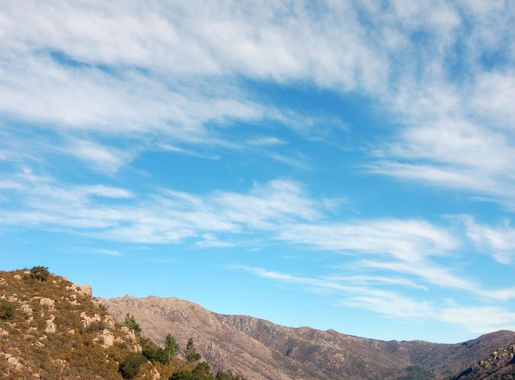
Peneda-Gerês National Park: A Natural Haven in Portugal
Discover the wild beauty and rich heritage of Peneda-Gerês National Park, Portugal's only national park, offering diverse landscapes, wildlife, and outdoor adventures.
Peneda-Gerês National Park, located in northern Portugal, is the country's only national park and a magnificent natural treasure. Covering over 700 square kilometers, it offers a breathtaking array of landscapes, from rugged mountains and deep valleys to serene lakes and lush forests. Whether you're an avid hiker, a wildlife enthusiast, or simply in search of tranquility, this park has something for everyone. The park is home to a rich diversity of flora and fauna, including rare species such as the Iberian wolf and the golden eagle. Ancient villages dot the landscape, offering a glimpse into traditional Portuguese life. The stone houses and narrow streets of these villages create a timeless atmosphere that contrasts beautifully with the surrounding wilderness. Waterfalls, rivers, and natural pools are scattered throughout the park, providing perfect spots for relaxation and swimming. The Arado Waterfall and the Tahiti Waterfall are particularly popular and offer stunning photo opportunities. For those interested in history, the park also contains archaeological sites like the Roman road of Geira, which dates back to the 1st century AD. Visitors can enjoy a variety of outdoor activities, including hiking, cycling, horseback riding, and bird watching. There are numerous well-marked trails suitable for all levels of fitness. Local cuisine, featuring dishes like roasted lamb and corn bread, is another highlight that adds to the overall experience of visiting Peneda-Gerês National Park.
Local tips in Peneda-Gerês National Park
- Wear comfortable hiking boots; trails can be steep and rocky.
- Bring a map or GPS device as cell phone coverage can be unreliable in remote areas.
- Visit in spring or autumn for milder weather and fewer crowds.
- Pack a picnic and enjoy it by one of the park's many scenic waterfalls.
- Don't miss the local villages; they offer unique cultural insights and traditional crafts.
Peneda-Gerês National Park: A Natural Haven in Portugal
Peneda-Gerês National Park, located in northern Portugal, is the country's only national park and a magnificent natural treasure. Covering over 700 square kilometers, it offers a breathtaking array of landscapes, from rugged mountains and deep valleys to serene lakes and lush forests. Whether you're an avid hiker, a wildlife enthusiast, or simply in search of tranquility, this park has something for everyone. The park is home to a rich diversity of flora and fauna, including rare species such as the Iberian wolf and the golden eagle. Ancient villages dot the landscape, offering a glimpse into traditional Portuguese life. The stone houses and narrow streets of these villages create a timeless atmosphere that contrasts beautifully with the surrounding wilderness. Waterfalls, rivers, and natural pools are scattered throughout the park, providing perfect spots for relaxation and swimming. The Arado Waterfall and the Tahiti Waterfall are particularly popular and offer stunning photo opportunities. For those interested in history, the park also contains archaeological sites like the Roman road of Geira, which dates back to the 1st century AD. Visitors can enjoy a variety of outdoor activities, including hiking, cycling, horseback riding, and bird watching. There are numerous well-marked trails suitable for all levels of fitness. Local cuisine, featuring dishes like roasted lamb and corn bread, is another highlight that adds to the overall experience of visiting Peneda-Gerês National Park.
When is the best time to go to Peneda-Gerês National Park?
Iconic landmarks you can’t miss
Parque Nacional Peneda-Gerês
Explore the breathtaking natural beauty and rich biodiversity of Parque Nacional Peneda-Gerês, a must-visit destination for nature lovers in Portugal.
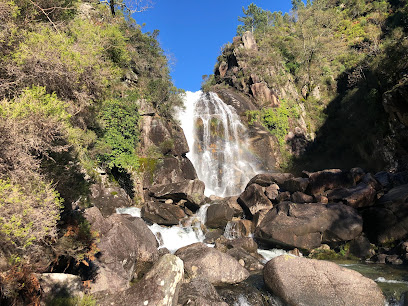
Cascata da Portela do Homem
Experience the breathtaking beauty of Cascata da Portela do Homem in Portugal's Gerês Natural Park, a paradise for nature lovers and adventure seekers.
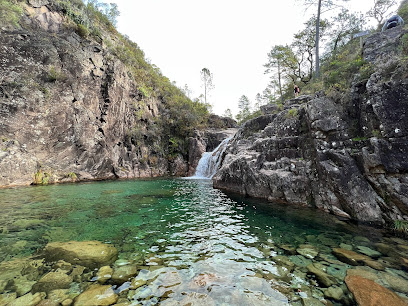
Cascata do Arado
Experience the breathtaking beauty of Cascata do Arado, a stunning waterfall and hiking area located in the heart of Portugal's Vilar da Veiga.
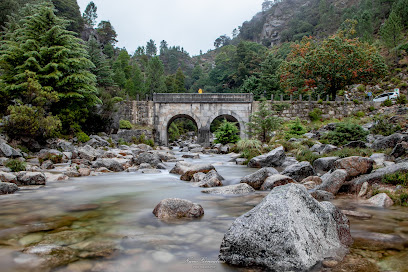
Cascatas de Fecha de Barjas (ou Cascatas do Tahiti)
Experience the breathtaking beauty of Cascatas de Fecha de Barjas, Portugal's stunning hiking destination with picturesque waterfalls and lush landscapes.
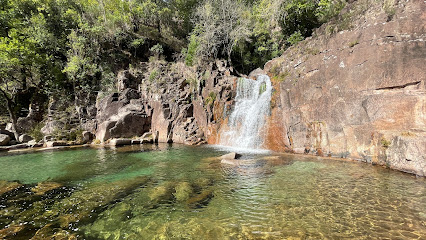
Porta do Mezio
Explore the stunning landscapes and rich biodiversity at Porta do Mezio, the gateway to Portugal's natural beauty.
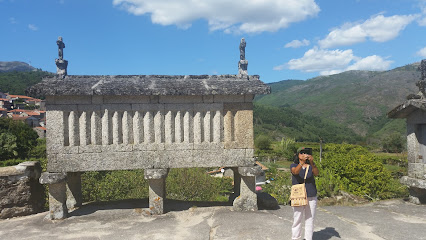
Parque das Termas (Gerês)
Discover the healing thermal springs and stunning landscapes at Parque das Termas in Gerês, a serene retreat for nature lovers and tranquility seekers.
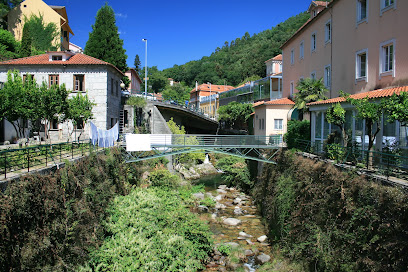
Reserva de la Biosfera Transfronteriza Gerês-Xurés
Explore the breathtaking landscapes and rich biodiversity of Reserva de la Biosfera Transfronteriza Gerês-Xurés, a haven for nature lovers and adventurers.
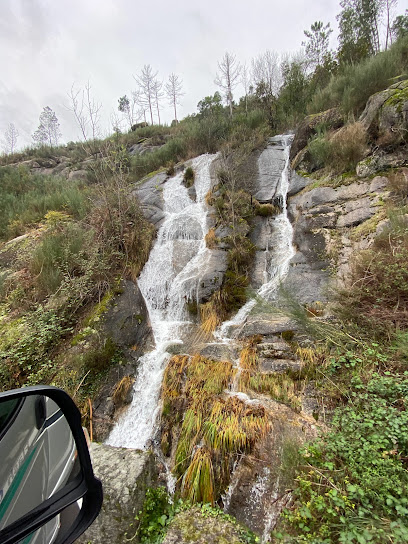
Caniçada Dam
Explore the breathtaking beauty of Caniçada Dam, a perfect blend of nature, adventure, and tranquility in Portugal.
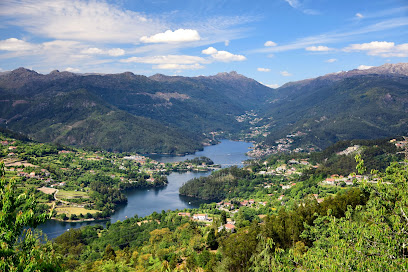
Tibo Lookout
Experience the breathtaking views and serene beauty at Tibo Lookout in Arcos de Valdevez, the perfect spot for nature lovers and photographers.
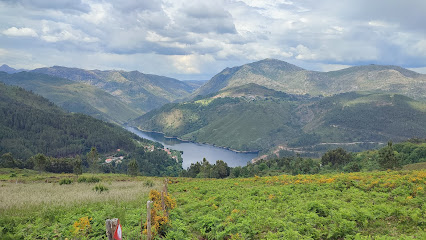
Mata de Albergaria (Gerês)
Explore the breathtaking beauty of Mata de Albergaria, a serene national forest within Peneda-Gerês National Park, perfect for nature lovers and adventurers.
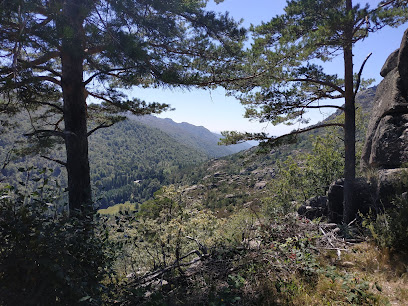
Fojo do Lobo de Fafião
Explore the historic charm of Fojo do Lobo de Fafião, a unique landmark in Portugal's stunning Montalegre region, rich in culture and natural beauty.
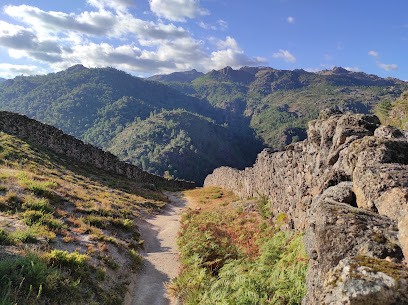
Water Park Gerês
Experience the ultimate aquatic adventure at Water Park Gerês in Alqueirã, a thrilling destination for families and water enthusiasts alike.
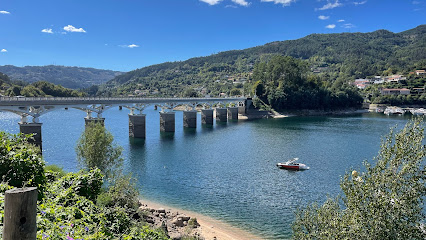
Poço da Gola
Explore the serene beauty of Poço da Gola, a hidden hiking gem in Parque Nacional Peneda-Gerês, perfect for nature lovers and adventure seekers.
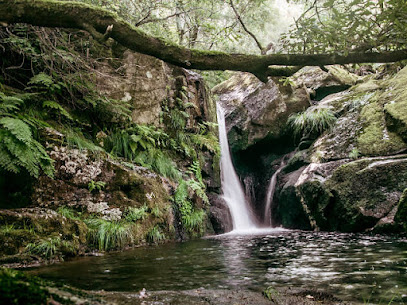
Cascata da Rajada
Cascata da Rajada: A breathtaking hiking area in Portugal with stunning waterfalls and lush landscapes, perfect for nature lovers and adventure seekers.
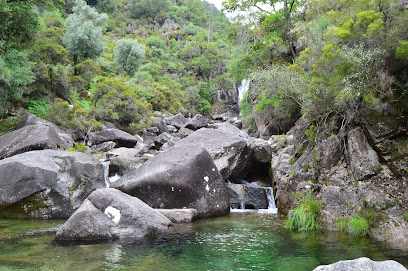
Trilho da Preguiça
Experience the serene beauty of Trilho da Preguiça, a picturesque hiking trail in Gerês, Portugal, perfect for nature lovers and adventure seekers alike.
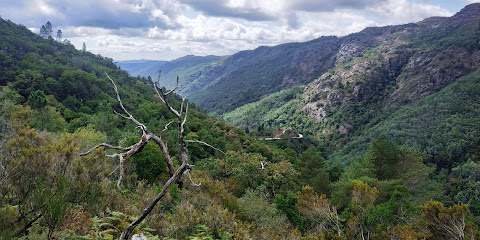
Unmissable attractions to see
Pena Aventura
Discover the excitement of Pena Aventura in Ribeira de Pena, a family-friendly amusement park with thrilling rides and stunning natural landscapes.
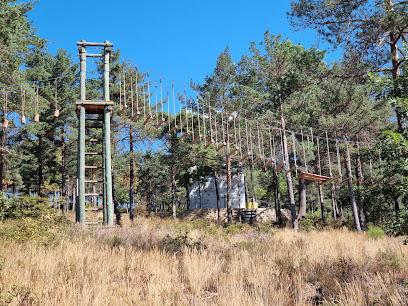
Pitões das Júnias cascata
Explore the stunning Pitões das Júnias Cascata, a hidden gem in Portugal featuring breathtaking waterfalls and scenic trails for nature lovers.
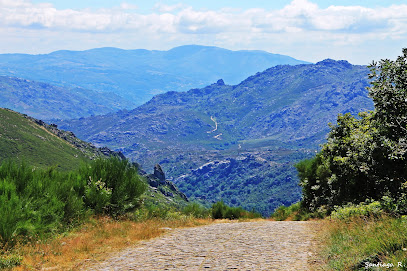
Poço Negro
Explore the breathtaking beauty of Poço Negro, a serene park in Portugal offering tranquility, nature, and picturesque landscapes for every traveler.
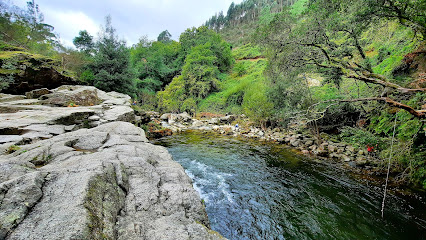
Soalheiro
Experience the exquisite wines and breathtaking views at Soalheiro Winery in Melgaço, Portugal, a must-visit destination for every wine lover.
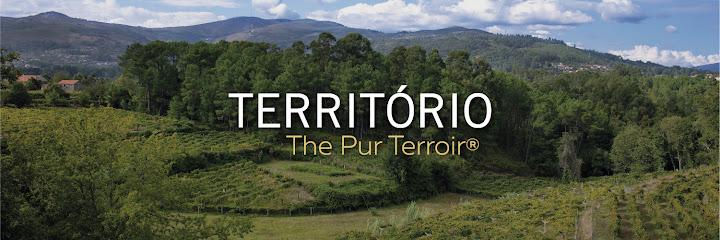
Calcedónia Fault
Explore the breathtaking Calcedónia Fault in Covide, a geological marvel offering stunning landscapes and unforgettable adventures for nature lovers.

Water Park Gerês
Experience the ultimate summer fun at Water Park Gerês, where thrilling slides meet serene landscapes in beautiful Alqueirão, Portugal.
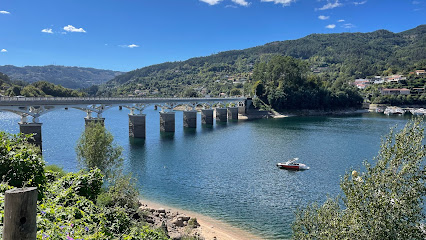
Miradouro da Preguiça
Discover breathtaking views at Miradouro da Preguiça in Vilar da Veiga, the perfect spot for nature lovers and photography enthusiasts.
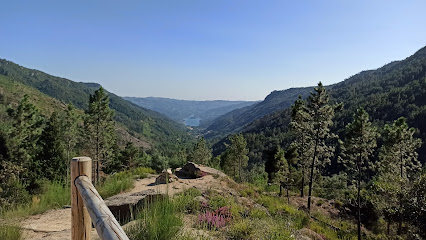
Câmara Municipal de Guimarães
Explore the stunning Câmera Municipal de Guimarães, a neo-Gothic architectural gem and cultural hub in the historic heart of Guimarães, Portugal.

Miradouro de Junceda
Discover stunning views of Gerês National Park at Miradouro de Junceda, a must-visit scenic viewpoint in Vilar da Veiga, Portugal.
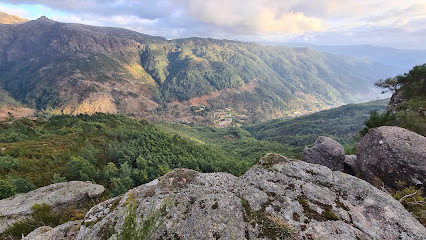
Minas dos Carris
Discover the breathtaking beauty and rich biodiversity of Minas dos Carris National Reserve, a hidden gem for nature lovers in Portugal.
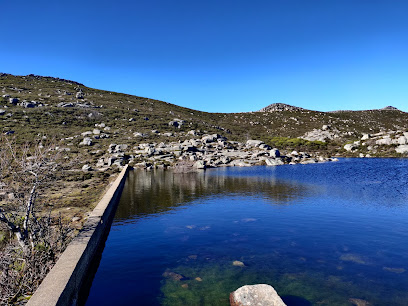
Ponte velha de Castro Laboreiro
Explore the enchanting beauty and rich history of Castro Laboreiro, where stunning landscapes and charming architecture await every traveler.
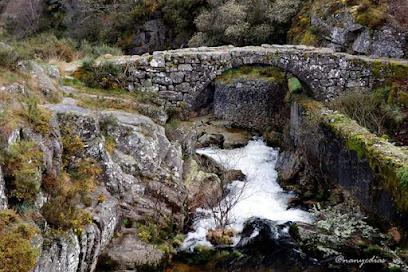
Cascata da Rajada
Discover the breathtaking Cascata da Rajada, a hidden gem in Portugal perfect for hiking and nature exploration amidst stunning waterfalls.
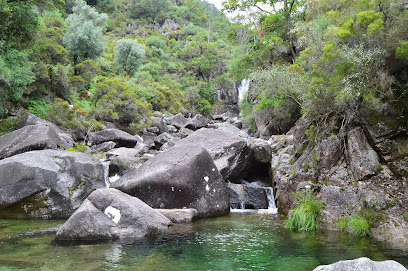
Miradouro da Fraga Negra
Experience the stunning beauty of Miradouro da Fraga Negra, a picturesque viewpoint in Portugal's breathtaking Gerês region, perfect for nature lovers.
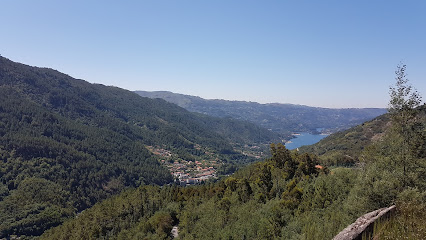
Cascata da Laja
Discover the breathtaking beauty of Cascata da Laja, a stunning waterfall in Gerês, Portugal, perfect for nature lovers and adventure seekers.
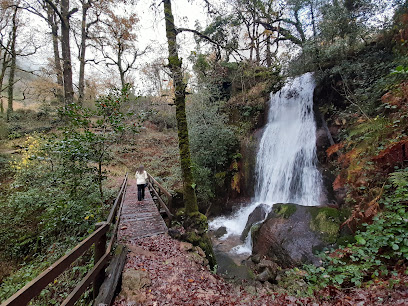
Cascata da Ribeiro de Gemesura
Explore the breathtaking beauty of Cascata da Ribeiro de Gemesura, a serene waterfall nestled in Portugal's lush landscapes, perfect for nature lovers.
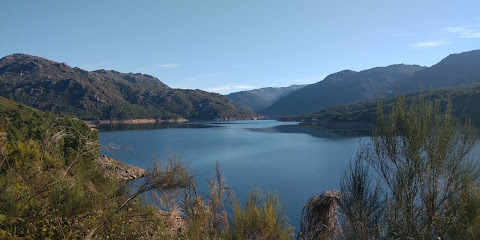
Essential places to dine
Lurdes Capela
Experience authentic Portuguese cuisine at Lurdes Capela, where tradition meets taste in every delightful dish.
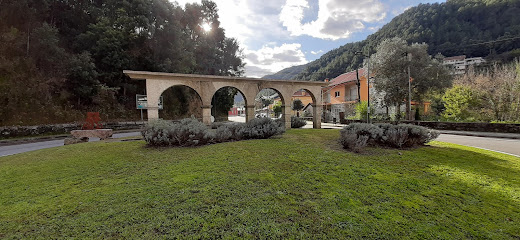
Vai... Vai Gerês
Experience authentic Portuguese cuisine in the heart of Peneda-Gerês National Park at Vai... Vai Gerês.
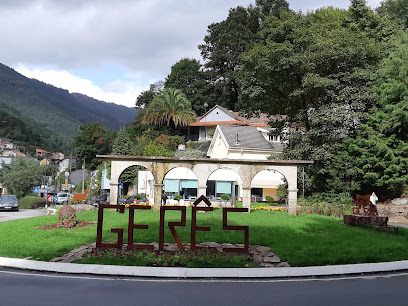
Restaurante Adega Ramalho
Experience authentic Portuguese cuisine at Restaurante Adega Ramalho in Gerês, where every dish tells a story of tradition and flavor.
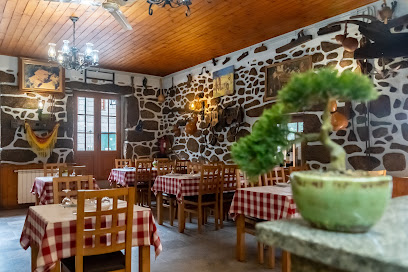
O Abocanhado
Discover O Abocanhado: An exquisite restaurant offering traditional Portuguese cuisine amidst Brufe's stunning landscapes.
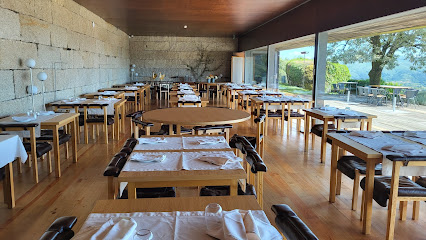
Marina Bar
Experience delightful cuisine with breathtaking views at Marina Bar in Gerês National Park—a haven for food lovers and nature enthusiasts alike.
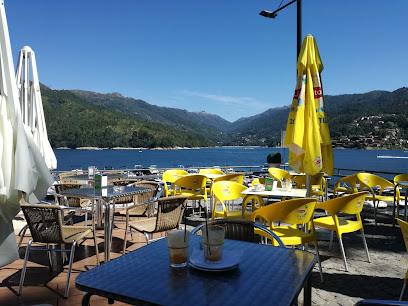
O Pimpão
Discover authentic Portuguese cuisine at O Pimpão in Gerês—where culinary tradition meets breathtaking nature.
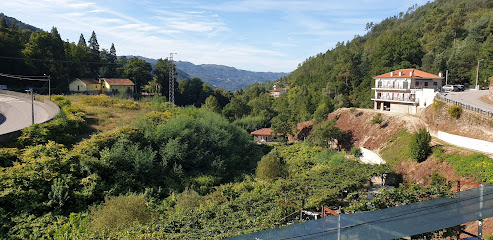
Saber ao Borralho
Experience authentic Portuguese cuisine at Saber ao Borralho in Arcos de Valdevez - a must-visit culinary destination.
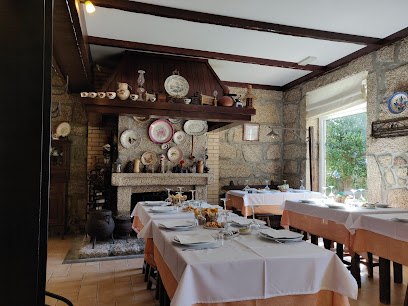
RESTAURANTE VIDEIRA
Discover authentic Portuguese cuisine at Restaurante Videira – where every meal tells a story of tradition and flavor.
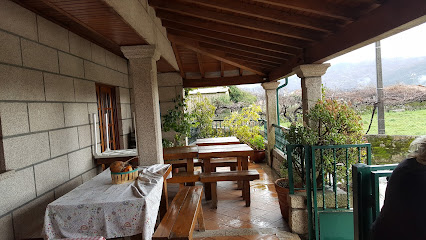
Restaurante Fojo dos Lobos
Discover authentic Portuguese flavors at Restaurante Fojo dos Lobos in Peneda-Gerês National Park - a true culinary delight surrounded by nature.
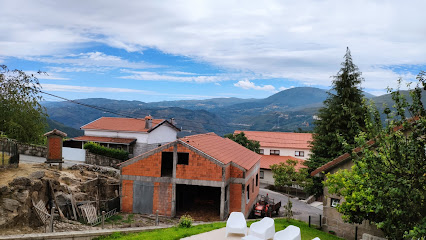
Petiscos da Bó Gusta
Experience authentic Portuguese flavors at Petiscos da Bó Gusta in Gerês - where every dish tells a story.
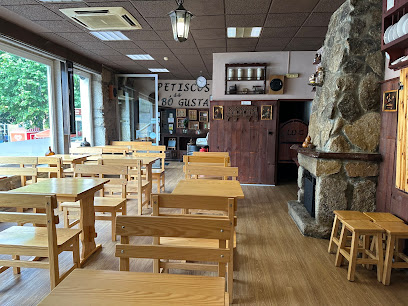
Encosta do Rio
Discover authentic Portuguese flavors at Encosta do Rio in Vilar da Veiga - a culinary haven surrounded by breathtaking nature.
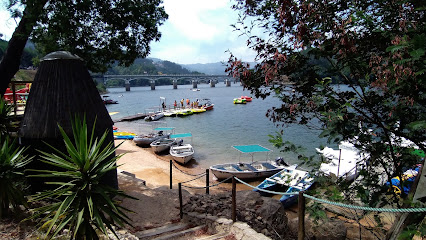
Espreita
Experience authentic Portuguese cuisine at Espreita in Gerês National Park—a perfect blend of nature and flavor.
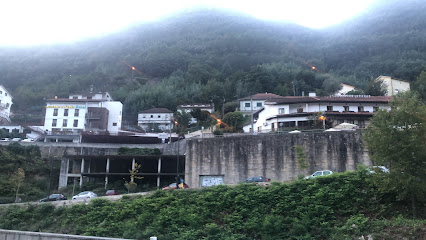
Restaurante Cantinho do Antigamente
Experience authentic Portuguese flavors at Restaurante Cantinho do Antigamente in beautiful Gerês.
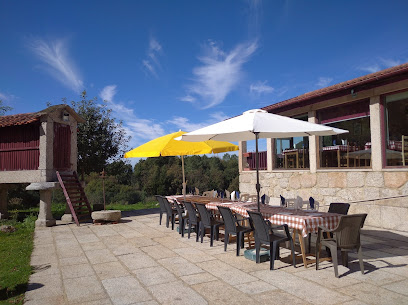
Restaurante Pedra Bela Gerês
Experience authentic Portuguese flavors and stunning views at Restaurante Pedra Bela Gerês in Braga.

Restaurante Espigueiro do Soajo
Experience authentic Portuguese flavors at Restaurante Espigueiro do Soajo – where every dish tells a story.
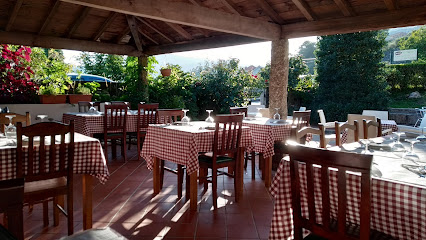
Markets, malls and hidden boutiques
Parque Nacional Peneda-Gerês
Discover the unparalleled beauty and adventure of Parque Nacional Peneda-Gerês, a national park in northern Portugal filled with breathtaking landscapes and rich biodiversity.
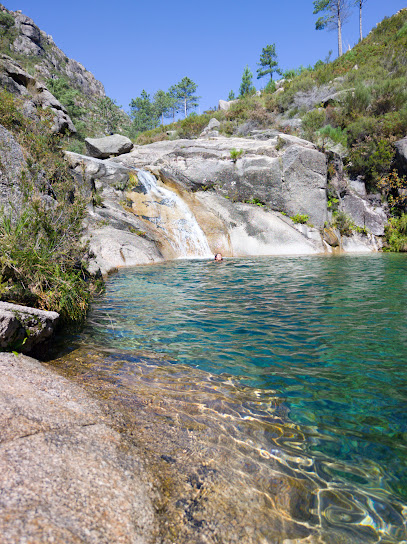
Cascata do Arado
Discover the stunning Cascata do Arado in Vilar da Veiga, a breathtaking waterfall and hiking area surrounded by nature's beauty.
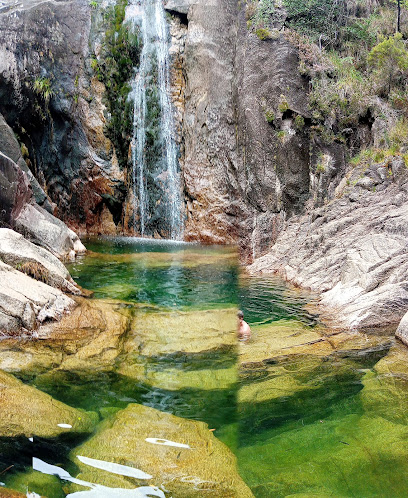
Rio Park
Explore the dynamic Rio Park in Cortez, Portugal - a shopping haven with diverse retail, dining, and entertainment options for every visitor.
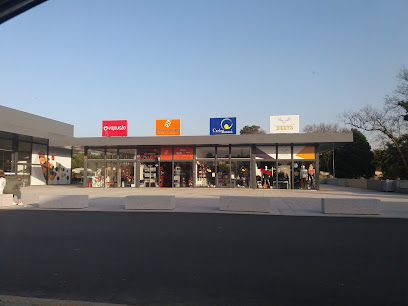
Viewpoint Rocas
Discover the stunning panoramas of Viewpoint Rocas in Vilar da Veiga, a must-see scenic spot for nature lovers and photographers.
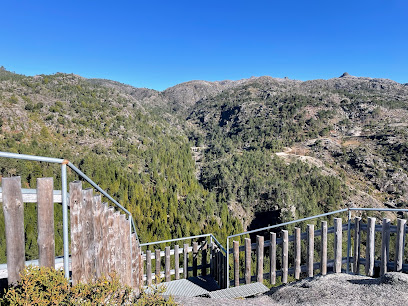
Pingo Doce Arcos Valdevez
Explore local flavors and grocery delights at Pingo Doce Arcos Valdevez, your one-stop hypermarket in Portugal's charming countryside.
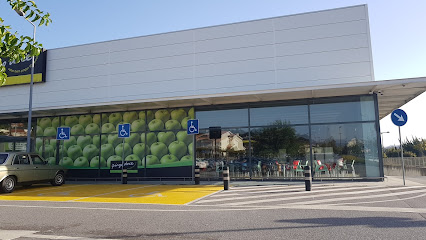
Intermarché Terras de Bouro
Explore local flavors and essentials at Intermarché Terras de Bouro, your friendly neighborhood supermarket in the heart of Portugal.
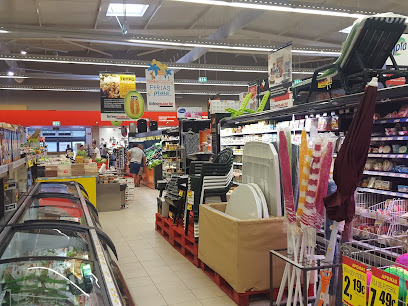
Mata de Albergaria (Gerês)
Discover the breathtaking beauty of Mata de Albergaria in Gerês, a national forest perfect for hiking, wildlife watching, and serene nature escapes.
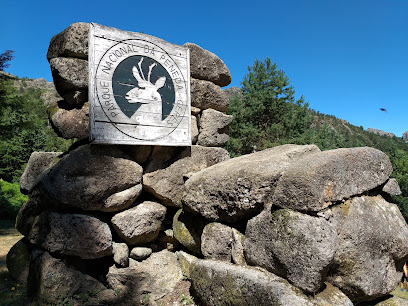
Selina Gerês
Experience the perfect blend of adventure and community at Selina Gerês, your gateway to Portugal's breathtaking landscapes and vibrant culture.

Tobogã - Portugal Canyoning Tours
Experience the thrill of canyoning in Portugal's stunning landscapes with Tobogã - your adventure starts here.
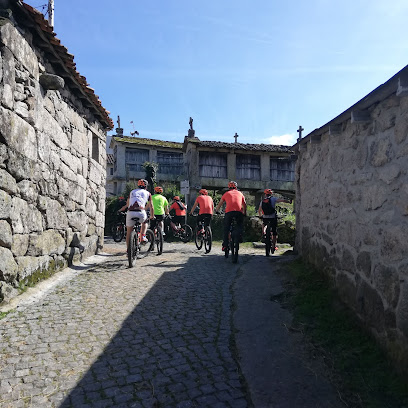
Espaço Casa
Explore Espaço Casa in Monção for exquisite home goods and unique gifts, perfect for enhancing your living space or souvenirs from Portugal.

ESuper Supermercados - Prozelo
Experience local life at ESuper Supermercados - Prozelo, your go-to destination for fresh produce and authentic Portuguese flavors.
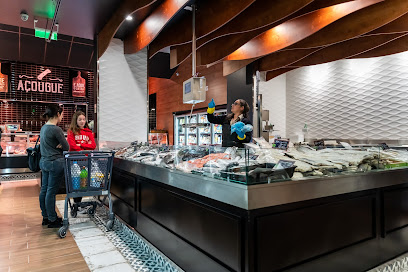
Peneda Gerês Adventure Center by Tobogã
Discover the adventure of a lifetime at Peneda Gerês Adventure Center by Tobogã, where thrilling outdoor activities await amidst stunning natural beauty.
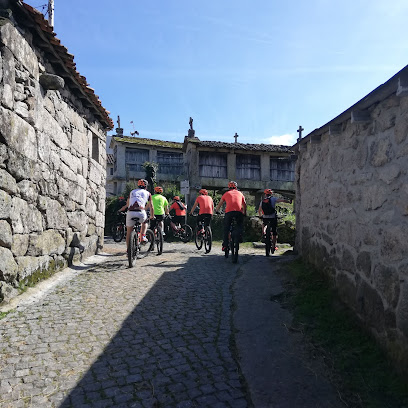
Supermercado Amanhecer Gerês
Experience local flavors at Supermercado Amanhecer Gerês, your one-stop destination for fresh produce and regional delicacies in the heart of Gerês.
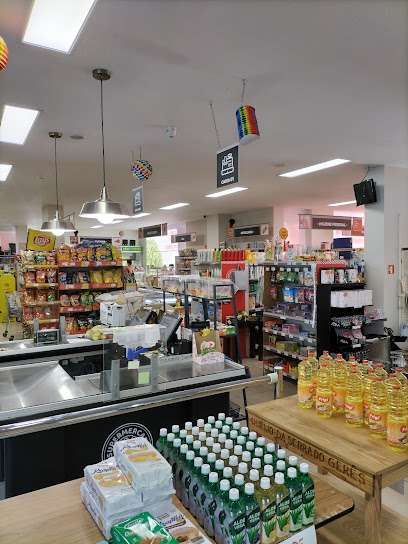
Padaria Lourdes
Discover the taste of tradition at Padaria Lourdes, a charming bakery in Terras de Bouro offering delightful Portuguese pastries and bread.
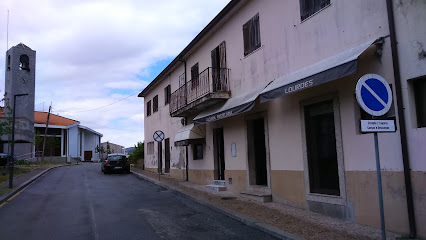
Espaço Vinhos e Sabores
Explore the rich wine heritage of Portugal at Espaço Vinhos e Sabores in Arcos de Valdevez, where exquisite tastings and local expertise await.
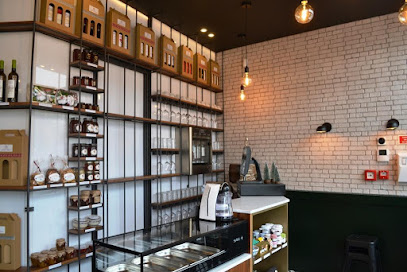
Essential bars & hidden hideouts
Lurdes Capela
Experience authentic Portuguese cuisine at Lurdes Capela, a must-visit restaurant known for its delightful dishes and cozy ambiance.
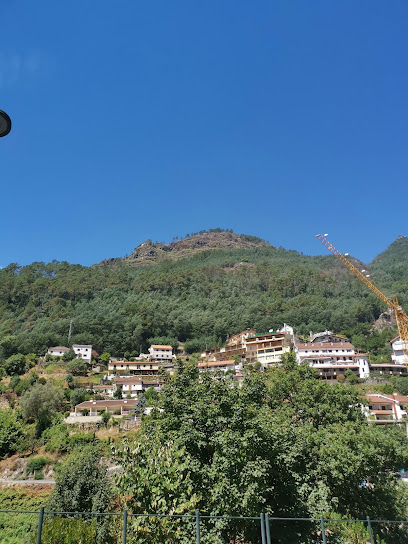
Vai... Vai Gerês
Experience authentic Portuguese cuisine at Vai... Vai Gerês, where local flavors meet warm hospitality in the heart of stunning Gerês.
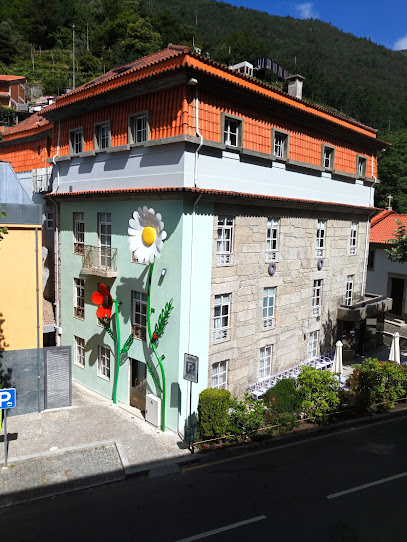
Restaurante Adega Ramalho
Discover the authentic taste of Portugal at Restaurante Adega Ramalho in scenic Gerês, where tradition meets culinary excellence.
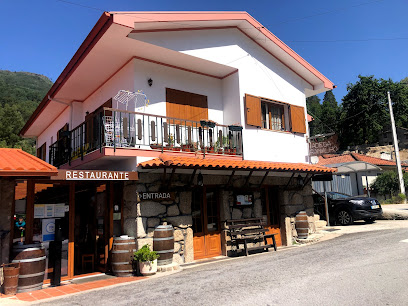
Marina Bar
Experience the essence of Portuguese hospitality at Marina Bar, a scenic riverside retreat in Rio Caldo offering delicious food and stunning views.
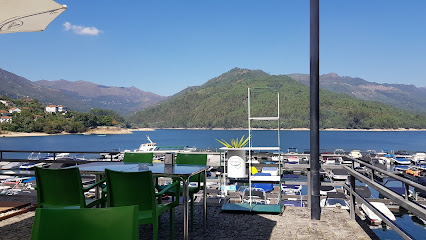
O Pimpão
Discover the flavors of Portugal at O Pimpão, a charming restaurant and bed & breakfast in the stunning landscape of Gerês.
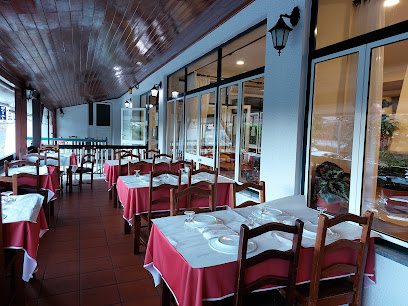
Petiscos da Bó Gusta
Experience authentic Portuguese cuisine in the heart of Gerês at Petiscos da Bó Gusta, where local flavors meet warm hospitality.
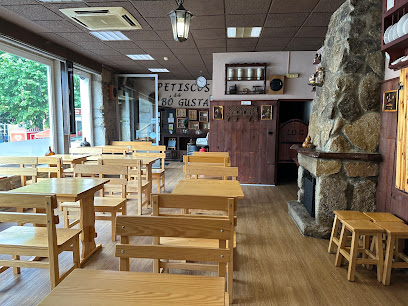
Casa Capela
Discover the authentic flavors of Portugal at Casa Capela, a charming restaurant in Gerês offering traditional dishes and local wines.
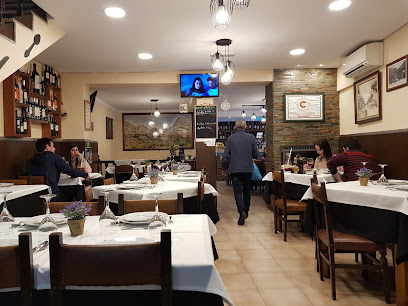
Bar da Piscina
Experience vibrant nightlife and refreshing drinks at Bar da Piscina, the perfect gathering spot for tourists and locals alike.

Restaurante Pedra Bela Gerês
Experience authentic Portuguese cuisine with breathtaking views at Restaurante Pedra Bela Gerês in Braga, a must-visit for any food-loving traveler.
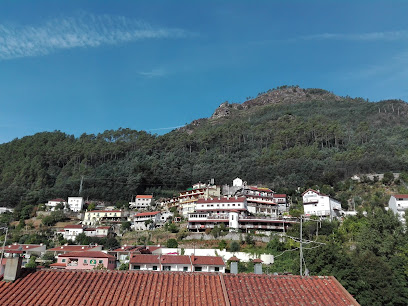
Espreita
Experience the essence of Portuguese cuisine at Espreita, a culinary gem in the heart of Gerês, where local flavors and breathtaking views unite.

Adega Regional
Experience the heart of Portuguese culture and cuisine at Adega Regional, where every dish tells a story.
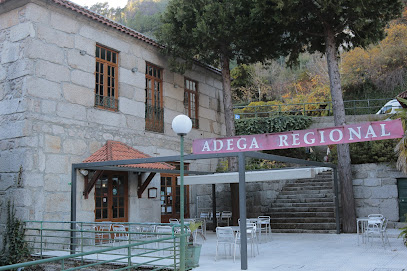
Lagoa
Discover the authentic flavors of Portugal at Lagoa, a charming restaurant known for its fresh seafood and traditional dishes in a cozy ambiance.
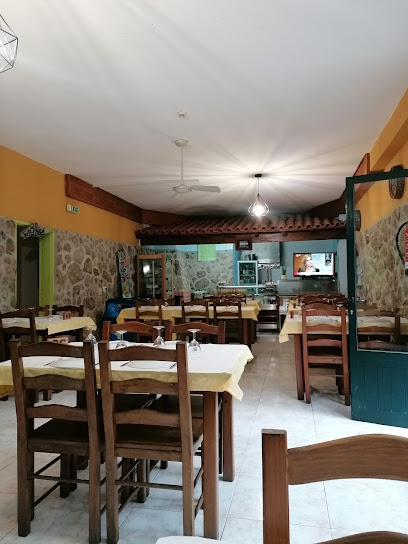
Churrasqueira Parque
Discover the essence of Portuguese cuisine at Churrasqueira Parque, where succulent grilled meats and vibrant atmosphere await every visitor.

Chamadouro Bar
Discover the exquisite flavors of Northern Portugal at Chamadouro Bar, a charming tapas restaurant and bar in Campo de Gerês.
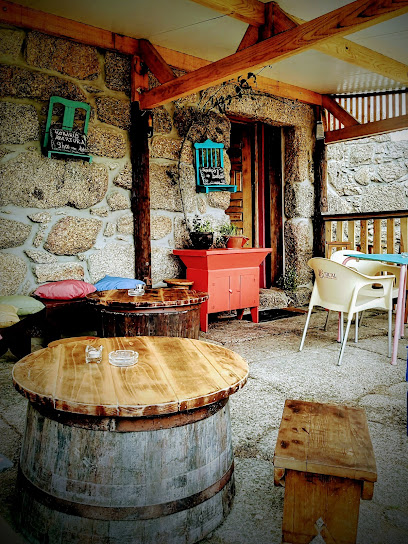
Bar da Fronteira
Experience the charm of Portela do Homem at Bar da Fronteira, where local culture meets a welcoming atmosphere and moderate prices.
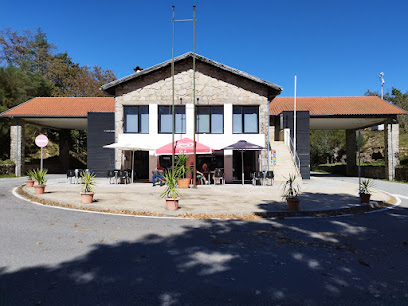
Local Phrases about Peneda-Gerês National Park
-
- HelloOlá
[oh-lah] - GoodbyeAdeus
[ah-deh-oos] - YesSim
[seem] - NoNão
[now] - Please/You're welcomePor favor/De nada
[pohr fah-vohr/deh nah-dah] - Thank youObrigado
[oh-bree-gah-doo] - Excuse me/SorryCom licença/Desculpe
[kohm lee-sehn-sah/deh-skool-peh] - How are you?Como está?
[koh-moh ehs-tah] - Fine. And you?Bem. E você?
[behn/eh voh-seh] - Do you speak English?Fala inglês?
[fah-lah een-glehsh] - I don't understandNão entendo
[now ehn-tehn-doo]
- HelloOlá
-
- I'd like to see the menu, pleaseGostaria de ver o menu, por favor
[goh-stah-ree-ah deh vehr oo meh-noo/por fah-vohr] - I don't eat meatNão como carne
[now koh-moh kahr-neh] - Cheers!Saúde!
[sow-deh] - I would like to pay, pleaseGostaria de pagar, por favor
[goh-stah-ree-ah deh pah-gahr/por fah-vohr]
- I'd like to see the menu, pleaseGostaria de ver o menu, por favor
-
- Help!Socorro!
[soh-koh-roh] - Go away!Vai embora!
[vah-ee ehm-boh-rah] - Call the Police!Chame a polícia!
[shah-meh ah poh-lee-see-ah] - Call a doctor!Chame um médico!
[shah-meh oom meh-dee-koo] - I'm lostEstou perdido
[ehs-toh pehr-dee-doo] - I'm illEstou doente
[ehs-toh doh-ehn-teh]
- Help!Socorro!
-
- I'd like to buy...Gostaria de comprar...
[goh-stah-ree-ah deh kohm-prahr] - I'm just lookingEstou só a ver
[ehs-toh soh ah vehr] - How much is it?Quanto custa?
[kwahn-too koosh-tah] - That's too expensiveIsso é muito caro
[ee-soh eh moo-ee-toh kah-roo] - Can you lower the price?Pode baixar o preço?
[poh-deh bahy-shahr oo preh-soo]
- I'd like to buy...Gostaria de comprar...
-
- What time is it?Que horas são?
[keh oh-rahsh soh] - It's one o'clockÉ uma hora
[eh oo-mah oh-rah] - Half past (10)Meia hora (dez)
[meh-yah oh-rah/dehz] - MorningManhã
[mah-nyah] - AfternoonTarde
[tahr-deh] - EveningNoite
[noyt] - YesterdayOntem
[oon-tehm] - TodayHoje
[oh-zheh] - TomorrowAmanhã
[ah-mah-nyah] - 1Um
[oom] - 2Dois
[doh-ees] - 3Três
[trehsh] - 4Quatro
[kwah-troh] - 5Cinco
[seen-koh] - 6Seis
[saysh] - 7Sete
[seh-teh] - 8Oito
[oy-toh] - 9Nove
[noh-veh] - 10Dez
[dehz]
- What time is it?Que horas são?
-
- Where's a/the...?Onde fica o/a...?
[ohn-deh fee-kah oo/ah] - What's the address?Qual é o endereço?
[kwahl eh oo ehn-day-reh-soo] - Can you show me (on the map)?Pode mostrar-me (no mapa)?
[poh-deh moh-strahr-meh/noo mah-pah] - When's the next (bus)?Quando é o próximo (autocarro)?
[kwahn-doo eh oo proh-kssee-moo/ow-toh-kah-roo] - A ticket (to ....)Um bilhete (para ....)
[oom beel-yeh-teh/pah-rah]
- Where's a/the...?Onde fica o/a...?
History of Peneda-Gerês National Park
-
Peneda-Gerês National Park is home to several ancient megalithic monuments dating back to the Neolithic period. These structures, such as dolmens and menhirs, were built by early inhabitants and are believed to have been used for ceremonial and burial purposes. The Dolmen of Vilarinho das Furnas is one of the most iconic, offering a glimpse into the prehistoric past of this region.
-
The Romans left a significant mark on the area, most notably through the construction of the Via Nova, a Roman road that connected Bracara Augusta (modern-day Braga) to Asturica Augusta (modern-day Astorga in Spain). This road facilitated trade and military movement across the region. Ruins of Roman milestones and bridges can still be found in the park, offering a fascinating insight into the Roman engineering prowess and their impact on local development.
-
During the medieval period, the strategic importance of the region led to the construction of several castles and fortresses. The Castle of Lindoso, built in the 13th century, stands as a prominent example. It played a crucial role in the defense against Spanish invasions and offers panoramic views of the surrounding landscape. The castle's battlements and towers evoke the turbulent history of medieval border conflicts.
-
The park is dotted with traditional villages that have preserved their unique cultural heritage over centuries. Soajo and Lindoso are well-known for their granaries, known as 'espigueiros', which are elevated structures used for storing corn. These villages also host annual festivals and local events that celebrate age-old traditions, folk music, and dance, providing an authentic glimpse into the rural lifestyle of the region.
-
Peneda-Gerês National Park was established in 1971, becoming Portugal's only national park. The creation of the park aimed to protect its unique biodiversity, landscapes, and cultural heritage. Covering an area of approximately 700 square kilometers, the park is a sanctuary for endangered species, including the Iberian wolf and the Garrano pony. It also encompasses diverse habitats ranging from lush forests to rugged mountains.
-
The park has been a site of religious significance for centuries, with several pilgrimage routes crisscrossing the area. The Sanctuary of Our Lady of Peneda, a pilgrimage site founded in the 18th century, is a focal point. Pilgrims have traveled through the park's rugged terrain to reach this sanctuary, which is nestled in the mountains and features a grand staircase and a baroque church, symbolizing the deep spiritual connection of the region.
Peneda-Gerês National Park Essentials
-
Peneda-Gerês National Park is located in the northern part of Portugal, near the Spanish border. The nearest international airport is Francisco Sá Carneiro Airport in Porto, approximately 100 kilometers away. From Porto, you can rent a car or take a bus to the park. The drive typically takes around 1.5 to 2 hours. Alternatively, you can take a train to Braga or Viana do Castelo and then a bus or taxi to the park.
-
While exploring Peneda-Gerês National Park, having a car is advantageous for accessing remote areas and scenic viewpoints. Car rentals are available in Porto and other nearby cities. Public buses also service some parts of the park, but they are infrequent. Taxis and local tour operators offer guided tours, which can be a convenient option. For hiking and short trips, bicycles can be rented in key locations within the park.
-
The official currency in Portugal is the Euro (EUR). Credit and debit cards are widely accepted in hotels, restaurants, and larger shops. However, it is advisable to carry some cash for smaller establishments, local markets, and rural areas within the park. ATMs are available in nearby towns such as Gerês and Arcos de Valdevez.
-
Peneda-Gerês National Park is generally a safe destination for tourists. However, standard safety precautions should be taken. Avoid isolated areas after dark and always let someone know your hiking plans. Petty crimes like pickpocketing can occur in crowded places, so keep an eye on your belongings. There are no specific high-crime areas targeting tourists in the park, but staying vigilant is always wise.
-
In case of emergency, dial 112 for immediate assistance. This number connects you to police, fire, and medical services. There are medical facilities in nearby towns such as Gerês and Arcos de Valdevez. It is highly recommended to have travel insurance that covers medical emergencies and accidents. For minor health issues, pharmacies are available in the surrounding towns.
-
Fashion: Do wear comfortable and weather-appropriate clothing for hiking and outdoor activities. Avoid overly revealing clothing out of respect for local customs and rural communities. Religion: Do respect local religious customs and traditions. When visiting churches or religious sites, dress modestly and be quiet and respectful. Public Transport: Do use public transport options where available, and be polite to drivers and fellow passengers. Don't eat or drink on public transport. Greetings: Do greet people with a simple 'Olá' (Hello) or 'Bom dia' (Good day). A handshake is also customary. Eating & Drinking: Do try local cuisine and specialties. Don't refuse food or drink offerings as it may be seen as impolite.
-
To experience Peneda-Gerês National Park like a local, visit the traditional villages and interact with the friendly residents. Attend local festivals and markets to learn about the culture and traditions. Don't miss the opportunity to try regional dishes such as 'Cozido à Portuguesa' and 'Caldo Verde'. For a unique experience, consider staying in a local guesthouse or 'Casa de Campo' to truly immerse yourself in the local lifestyle.
Trending Landmarks in Peneda-Gerês National Park
-
Parque Nacional Peneda-Gerês
-
Cascata da Portela do Homem
-
Cascata do Arado
-
Cascatas de Fecha de Barjas (ou Cascatas do Tahiti)
-
Porta do Mezio
-
Parque das Termas (Gerês)
-
Reserva de la Biosfera Transfronteriza Gerês-Xurés
-
Caniçada Dam
-
Tibo Lookout
-
Mata de Albergaria (Gerês)
-
Fojo do Lobo de Fafião
-
Water Park Gerês
-
Poço da Gola
-
Cascata da Rajada
-
Trilho da Preguiça
Nearby Cities to Peneda-Gerês National Park
-
Things To Do in Guimarães
-
Things To Do in Ponte de Lima
-
Things To Do in Viana do Castelo
-
Things To Do in Chaves
-
Things To Do in Vila Real
-
Things To Do in Porto
-
Things To Do in Lamego
-
Things To Do in Bragança
-
Things To Do in Aveiro
-
Things To Do in Santiago de Compostela
-
Things To Do in Coimbra
-
Things To Do in Salamanca
-
Things To Do in Tomar
-
Things To Do in Viseu
-
Things To Do in Oviedo




